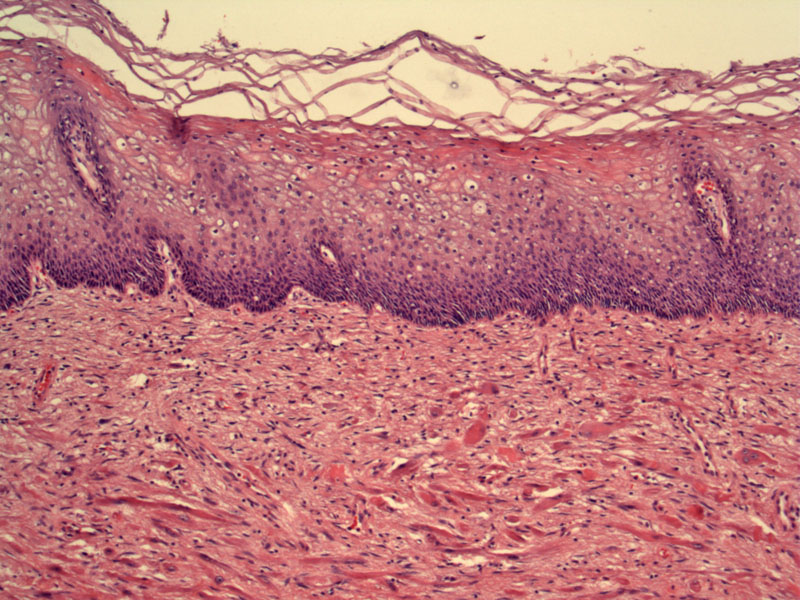

Loosely arranged deeply eosinophilic spindled rhabdomyoblasts are seen in the submucosa. The overlying squamous mucosa is completely normal.
The rhabdomyoblasts appear oval and almost inclusion-like when seen en face.
Haphazardly placed wavy spindled cells (rhabomyoblasts) are seen. Mitoses are not present. Dilated dilated thin walled capillaries are also present.
Note the cross-striations (arrows) in the rhabdomyoblasts.
Rhabdomyomas are mesenchymal tumors showing skeletal muscle differentiation and occur as either cardiac or extracardiac types. The extracardiac type is classified further into 3 subgroups - adult, fetal and genital.
In the female genital tract, rhabdomyomas are most commonly arise in the vagina, followed by the cervix and vulva. Microscopically, spindled or strap-shaped rhabdomyoblasts with cross-striations are loosely arranged in the loose connective tissue. The vesicular nuclei have a single prominent nucleoli1
The main differential diagnosis is rhabdomyosarcoma botryoides, which occurs in a much younger population and is characterized by a cambium layer and prominent cytologic atypia.
Described in those 25-54 years of age. Presents as a polypoid mass, vaginal bleeding or dyspareunia.
Excision is curative.
Benign; excision is curative. Recurrences are rare and metastases do not occur.
1 Nucci MR, Oliva Esther. Gynecologic Pathology: Foundations in Diagnostic Pathology. Philadelphia, PA: Elsevier: 2009: 111-3.
2 Fletcher CDM, ed. Diagnostic Histopathology of Tumors. 3rd Ed. Philadelphia, PA: Elsevier; 2007: 723.